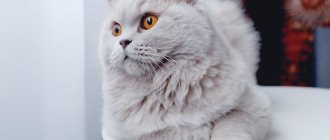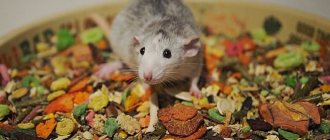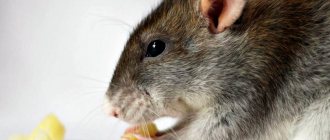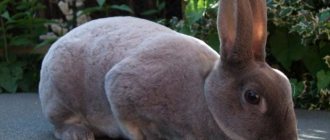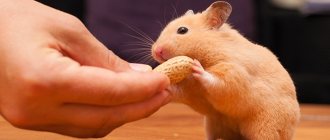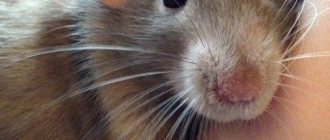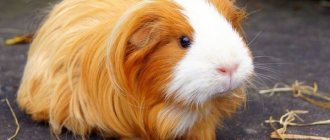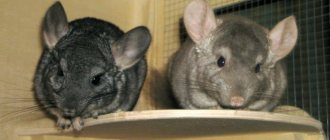Advertising has long entered our lives, taking away a certain share of television and Internet airtime. No matter how much people like watching commercials, almost everyone involuntarily freezes when the face of a charming kitten with naive and intelligent eyes appears on the monitor. The first question most people have is what is this adorable baby? And to understand where to buy such a beauty, you need to find out what breed it is. Whiskas commercial cat.
The unusual color of the cat has become the calling card of Whiskas, attracting the attention of cat lovers to the brand. Why is a kitten so attractive and what breed is it?
Who is he - a funny plush kitten
The breed is called British Shorthair. There are several standard colors. The kitten from the Whiskas advertisement is a black, silver tabby. Characterized by the presence of dark patterns on a light background. Eyes green or yellow. There is a mark on the forehead in the form of the letter M. Tabby has several variations.
- Mackerel or tiger. There are thin tiger stripes on a light silver background.
- Spotted. Characterized by the presence of intermittent stripes and spots of different shapes and sizes.
- Marble. With spiral wide stripes.
Those who watch Whiskas advertising carefully have probably noticed that all the kittens are of different colors. But the one that stands out the most is the handsome mackerel. The kittens grew up in a British nursery. They have been appearing in commercials since 2003. Interestingly, cats of different breeds took part in the shooting: Burmese, Bengal. But for some reason the British kitten won the hearts of the audience.
This is interesting: Instructions for using Forvet for cats
Colors featured in advertising
The color of the British, who were filmed earlier and are now participating in advertising for Whiskas food, is called silver tabby. This coat color was not chosen by chance. It gives the purrs a toy-like appearance, which is why viewers love it.
In addition, this color is very common among British breed cats. This means that in the event of force majeure, the furry actors can be replaced, and the audience is unlikely to notice anything.
This is interesting! Nowadays, British silver tabby cats are often called “whiskey cats” or “whiskas cats”.
Not everyone knows, but the silver tabby coat color of the cats from the Whiskas advertisement comes in several variations:
tiger (mackerel).
Kittens of this color have clearly visible stripes on their fur that resemble the skin of a tiger. This is exactly how the painted animal actors were most loved by the audience;
marble.
This color is considered the rarest among silver tabbies. Cats with this color also have stripes on their coats, but they form patterns, and in the shoulder area the pattern resembles a butterfly. Animals with a similar color also participated in advertising for Whiskas food;
spotted.
These cats have many black spots on their fur, which make them smaller copies of leopards.
It is important! Cats of any variety of silver tabby color have yellow or green eyes and an “M” mark on their forehead. All British shorthair candidates for a role in Whiskas food advertising undergo a very strict selection
The following requirements apply to them:
All British shorthair candidates for a role in Whiskas food advertising undergo a very strict selection process. The following requirements apply to them:
- pretty appearance;
- silver tabby color;
- calm and friendly disposition;
- ability to withstand several takes in a row;
- ability to pose;
- the ability to perform the stunts planned by the director of the video;
- the ability to not get lost on the set;
- healthy and well-fed appearance;
- soft and shiny wool;
- lively sparkle in the eyes.
This is interesting! Compliance with the last three points is mandatory not only for aesthetic reasons, but also as a marketing ploy. After all, all these signs indicate the cat’s good health, which means that the food she advertises must be healthy.
It is quite possible that the British cats who starred in the Whiskas commercials did not acquire their beautiful appearance thanks to this food. All of them receive competent care, regular veterinary examinations and nutrition with super-premium food.
What kind of animal is this - a British shorthair cat?
Now almost everyone knows what a British Shorthair looks like. And it’s hard to understand how such a cute baby can be the cub of such a serious and plush cat. Some people think that British cats are gray (more precisely, lilac) or white, black, or, less commonly, saffron milk caps. But few people have seen tabby shorthair cats of the British breed. But it was this cat that starred in the commercial.
Nutrition
Despite the fact that the commercial was filmed very cutely and beautifully, you should not feed cats this food. Whiskas belongs to economy class feeds, they contain no more than 4 meat content! percent, but there are a lot of flavor enhancers and preservatives. Do not skimp on the health of your pets, because a nutritious diet is a guarantee of animal health. The British are partial to dairy products, sweets and meat. Since they can eat a lot of food, it is necessary to control the diet and amount of food.
Why is Whiskas the cat so popular?
Not all people are loyal to advertising on television or on the Internet. But, whatever one may say, it has become an integral part of the life of a modern person. Advertising is a time when the human brain perceives information primarily superficially, that is, literally lets it pass by.
Many people like the cat from popular advertising
But who doesn’t stop their gaze on the screen when the face of everyone’s favorite animal appears there? This adorable cat from a cat food commercial has won the hearts of viewers. Its characteristic, memorable color has long branded all cats of this breed as the “Whiskas cat.”
Cat breed from Whiskas food advertisement
When a person who is just thinking about what breed of kitten to get, he involuntarily pays attention to the options that are most accessible to the eye. Today these are animals from commercials. Then many people have a question about the breed of cat from Whiskas. The Whiskas cat is a British Shorthair breed.
Note! The color of the kitten in the advertisement is called silver tabby, and today this color is the most popular among British Shorthair cats. Perhaps this was facilitated by the extensive advertising of Whiskas with a cat of this breed in the leading role.
Acquaintance
So, I won’t bother you with a long wait, and... drum roll: the cat from the Whiskas ad is a British Shorthair. Today, all over the world, British cats are considered the most popular.
The cats, or rather the kittens from the commercial, were born and raised in Germany in a nursery called “Silver Treasure”. The kittens of this nursery have become recognizable since 2003. Can you imagine how much time has already passed? But it was the British with the “silver tabby” color that viewers fell in love with. You can often find the color “brindle” or “merle tabby”. A breed with this color is considered new, bred by pet lovers, not by felinologists. It is noteworthy that in recent years a characteristic feature has been the naming of a cat’s breed after the name of the food it advertises.
Having learned what breed of cat is in the Whiskas advertisement, many people rush headlong to buy it. But first you should find out the prices. Thoroughbred British are unlikely to be handed over to “good hands” for free. Imagine, the cost of a kitten from a commercial (not the same one, but a similar one) varies between 25-100 dollars. Purebred young pets with a rare color can cost about 250-350 dollars.
Why did British Shorthairs win the tender to appear in the Whiskas commercial?
The cat from the Whiskas advertisement is the face of the brand. Why was this breed given such honor? Everything is so banal. When a TV viewer sees such a baby, he understands that the “British” is the personification of an ideal (in every sense) pet: so calm, sweet, balanced, well-groomed and unrivaled. This breed is capable of unbalancing (in a good way) even the most unemotional and secretive person: you just want to cuddle the baby.
The British Shorthair breed was chosen because it has the following qualities:
- ideal composition, harmony and proportionality of the body;
- dense and thick tabby coat resembles a plush blanket;
- adult Scottish Straight animals and kittens are equally attractive to television viewers;
- absence of signs indicating the exclusivity of the breed.
As already mentioned, representatives of the breed for advertising are raised in a German nursery. The key to success is to comply with the following laws:
- good heredity;
- proper care;
- balanced, proper nutrition;
- constant examination by veterinarians;
- natural selection.
Only by complying with the above standards do breeders raise energetic, attractive, healthy pets. Moreover, kittens with the most touching and sweet faces are selected for advertising.
Description of the breed and character of the “British”
Now it’s time to move on to the description of the British cat breed. According to standards, a pet must have the following characteristics:
- size: large or medium;
- back: strong and massive;
- chest: wide;
- neck: short and massive;
- strong paws and short stature;
- tail: thick, short with a round tip;
- well developed and pronounced chin;
- nose: straight, wide, short;
- eyes: large, round, widely set;
- coat: elastic, short, not adjacent to the body, thick;
- round cheeks and head;
- Ears: wide at the base, small or medium in size, set wide apart.
This breed comes in 60 colors. Here are some of them:
- marble;
- blue;
- ginger;
- lilac;
- chocolate;
- black.
Just because cats are filmed for food commercials does not mean that they are so beautiful, cute and attractive thanks to the consumption of these particular granules. Numerous factors influence a pet's appearance, and food is one of them.
The British breed is presented as calm and balanced. Playfulness in moderation. There is no excessive activity. Aggression? Completely unusual for this breed. What attracts the future owner when he looks at a kitten? Aristocratic character, self-esteem, lack of rancor and vindictiveness, touchingness, cheerfulness, courtesy, love! By the way, an easy-going character and balance are traits inherent in the “Scots” by nature. And not at all because cats eat Whiskas (which the manufacturer assures us).
Which cat is considered self-sufficient, intolerant of familiarity and persistence: the one that stars in Whiskas commercials. Cats of this breed can sit on their owner’s lap and purr, but only at their own request. You should not be persistent: the pet will not scratch or bite (this is beneath its dignity), but it will find a way to gain freedom and leave. Intelligence, restraint, stiffness are traits inherent not only to British people, but also to cats.
This is interesting: Do cats sweat?
Features of behavior
The most important quality of the British breed is aristocracy. This cat is full of self-esteem, she will not beg for affection or beg for food, and will not take petty revenge or mischief.
She is completely self-sufficient, can remain alone for a long time, does not impose herself and does not tolerate familiarity. Therefore, if you dream of an affectionate animal that constantly rubs against your legs or purrs on your lap, it is better to opt for a different breed.
Of course, a Briton can sometimes sit on his lap and purr, but only if he wants to. He rejects annoying affection calmly and firmly - he considers scratching and biting beneath his dignity, but he will free himself and leave. In a word, a real Englishman - smart, reserved, self-aware and a little prim - a sort of cat-like Jeeves.
At the same time, the British are distinguished by their cleanliness, they almost never have misunderstandings with a tray or scratching post, and they extremely rarely spoil their household things. Adult animals are not very active and jumping - they are rather contemplators and philosophers. But at the same time, the British are graceful and precise in their movements, they love to climb onto cabinets and high shelves of cat racks in order to condescendingly survey the surroundings from there.
Cats of this breed are self-sufficient and aristocratic; from them you can immediately understand that the animal is well-mannered, noble, and not some mongrel. With a certain love of freedom and high egoism, the British are surprisingly easy to train. They are smart, quickly remember and understand what is wanted from them. In addition, they easily adapt to new surroundings.
The British love society, but value their independence. If the owner wants to get a good friend and an obedient pet, he should devote enough time to training. You should not let your pet feel that you can be pushed around - the cat must respect you.
You should also not show excessive affection; representatives of this breed cannot be called sissies, they are unlikely to lie in your arms often. However, this does not mean that there is no need to touch the British at all: like any representatives of the cat, they purr with pleasure when they are stroked or scratched behind the ears, but only when they themselves want it.
They actively take part in life at home, love to communicate and play. British cats rarely play favorites and treat all household members equally friendly. They get along well with other animals and children, are sociable and open.
Problems with keeping British cats rarely arise - cats are neat, quickly get used to the tray and scratching post, and do not have the habit of spoiling their owner's things. With age, they become less and less active, so do not forget about moderate physical activity, which will be very beneficial for your pet.
The face of Whiskas food
The cat from the Whiskas advertisement belongs to the British Shorthair breed. Why was he chosen? Everything is very simple. Taking one look at him, you understand that he personifies the ideal pet: calm, balanced, with a cute face and well-groomed fur. Such a cat can melt the heart of the most callous person.
In addition, when watching a commercial, many will project the effect of consuming Whiskas food onto their own cat. Therefore, we can say that the representative of the British breed has become a collective image:
- the body is perfectly built, proportional;
- the wool is thick, dense, which is why it resembles a plush blanket;
- both kittens and adult cats are equally attractive;
- There are no obvious signs that would indicate the exclusivity of the breed.
All these appearance features allow each owner to compare the cat from the advertisement with their pet.
On a note! Of course, the external aesthetics of the British is not a consequence of feeding exclusively on Whiskas products.
What kind of purebred British are they?
To “ground” the advertising stars a little, let’s look at the main features of the breed. So, the British Shorthair cat must have the following standards:
- body of medium or large size;
- the chest is wide;
- the back is massive, strong;
- limbs are strong, short;
- round paws;
- the tail is short, with a rounded tip, thick;
- the head is round;
- the neck is short, massive;
- cheeks are round;
- the chin is well developed and pronounced;
- the nose is wide and short, straight;
- the ears are set wide apart, small, wide at the base;
- the eyes are round, set wide, large;
- The coat is short, very thick, elastic, and does not adhere to the body.
British cats are stocky and muscular
There are about 60 colors characteristic of this breed, and the most common include:
- marble;
- black;
- blue;
- creamy blue;
- lilac;
- chocolate.
What can I do to prevent this in the future?
If you are on a personal connection, like at home, you can run an anti-virus scan on your device to make sure it is not infected with malware. If you are at an office or shared network, you can ask the network administrator to run a scan across the network looking for misconfigured or infected devices.
Another way to prevent getting this page in the future is to use Privacy Pass. You may need to download version 2.0 now from the Chrome Web Store.
Cloudflare Ray ID: 568604f10883c85f • Your IP: 5.45.65.94 • Performance & security by Cloudflare
In the advertising video presenting Whiskas cat food, you can see a beautiful cat with a bright and memorable color - a brindle tabby on a silver background. This color looks great not only on the TV screen, but also in reality. In addition, the cats appearing in the commercials belong to a very calm and balanced breed of British Shorthair, which has received recognition throughout the world. There are other breeds with similar colors.
Most TV viewers liked the funny kitten with an unusual coloring from an advertisement for the famous Whiskas cat food. Since then, many began to believe that the video featured a cat with this color or an animal of the same breed.
There is no color with this name, much less the Whiskas cat breed. The advertisement featured a British shorthair cat with a color belonging to the group of patterned colors, specifically “brindle tabby.” It is also called "black and silver mackerel".
England is considered the homeland of these cats. However, there is not much information about their origin. It is assumed that the first British kittens appeared in Foggy Albion more than 2 thousand years ago and were brought there by Roman legionnaires. This variety is one of the most natural, since it has undergone minor changes in order to improve the breed. This explains the excellent health of its representatives.
The body of the British is powerful and proportional with a broad chest, short back, strong and full paws. Eyes of beautiful golden orange and honey shades are located on a large head with thick cheeks. The ears are small with rounded tips. The tail is of medium length. The hallmark is the thick, densely structured, plush-to-the-touch coat and well-developed undercoat. The average weight of individuals is from 4 to 6 kg.
British Shorthair cats come in many colors (more than 250), including some that are similar to the colors of wild cats. They are called tabby colors.
| Color name | Short description | |
| Spotted, spotted or leopard print | Cats with similar colors resemble miniature leopards. The spots are located on the back and sides and stand out against a light background. Their shape is round, oval and oblong |
Diseases
The main problem of the breed is the presence of blood groups A and B. If the blood groups of the male and female are incompatible, weak kittens are born after mating, since the cat produces antibodies to the other blood group. On the very first day, antibodies are transferred through breast milk and if the kittens have a different blood type, they die within three days. In America, British people are given a DNA test and a couple is matched with the same blood type. Unfortunately, such analysis is not done in our country.
This breed is also characterized by complications in the functioning of the heart; they are often diagnosed with hypertrophic cardiomyopathy. Therefore, to maintain health, it is very important to eat high-quality food, with additives that improve the functioning of the cardiovascular system, and timely visits to the veterinarian.
Care
Particular attention is paid to the coat of British cats, as there is a thick undercoat that needs to be combed three times a week. And during the molting period even more often. If the cat does this on its own, then you need to give it a special paste that dissolves the hairs and removes them naturally, since villi that get into the stomach cause problems in the gastrointestinal tract.
You should also periodically clean your ears. The British do not like water treatments; you can use dry shampoo, which makes it easy to cleanse the coat of dirt.
History of the origin of the British breed
According to one version, about 2 thousand years ago the ancestors of British cats came to Foggy Albion from Ancient Rome; according to another, in the 14th–15th centuries they served as rat catchers on board French merchant ships. In England, they continued to fulfill their direct duties - to protect crops and harvests from rodents.
Until the 19th century, the British developed without human intervention: in new climatic conditions they acquired a plush coat, became more hardy and strong. The breed was first developed by researcher and breeder Harrison Ware. At the London exhibition in 1871, he presented a 14-year-old British blue tabby named Old Lady, who became the winner. The breed created a sensation; many wanted to become owners of such purrs.
Harrison Ware portrayed his British Old Lady in the book “Our Cats and Everything About Them”
The First and Second World Wars took a serious toll on the British population. To restore the breed, they began to be crossed with Russian Blues, Persians, and Chartreuses. The breeders' efforts were crowned with success: soon the popularity of plush cats increased again, and in 1970 the first British cat club opened. Ten years later, the felinological association CFA officially recognized the breed and developed a standard, and in 2009 other organizations joined it - WCF and TICA.
Appearance of British cats
The “correct” British cat has:
- stocky and proportional body;
- rounded shapes;
- strong paws;
- short and thick tail;
- round head on a powerful neck;
- massive muzzle with pronounced cheeks;
- wide-set saucer eyes (most often amber or copper in color);
- small rounded ears;
- short thick coat with dense undercoat.
From any angle, the face of a British cat looks well-fed
The British are famous for their incredible variety of colors. The most popular colors are:
- plain (blue, chocolate, lilac, etc.);
- color point - the mask, ears, paws and tail have a more saturated shade;
- tortoiseshell - two colors are evenly distributed on the fur coat (for example, the main one and cream or red);
- bicolor - combinations of the main tone with white;
- tipped - with a white undercoat and tips painted in the main color;
- tabby is a patterned color found in wild cats. The Whiskas advertisement featured cats of all types of tabby: mackerel (tiger) - with black thin stripes on the main background;
- spotted (leopard) - with dark spots randomly scattered throughout the coat;
- marble - with black wide stripes forming a complex pattern.
Photo gallery: main colors of the British
Tabby color varieties
This coat color has several varieties:
Spotted tabby kitten
- Tiger tabby, or mackerel. Cats of this color resemble tigers in appearance. Like their predatory relatives, their fur coat has characteristic stripes of a darker shade than the main background, which stretch from the back to the stomach. The value of the animal depends on the number of vertical stripes and their clarity.
- Spotted tabby, or spotted. Animals with this color have dark spots of the same size evenly distributed throughout the body. There is an intermittent dark stripe on the back.
- Marble tabby, reminiscent of the pattern on marble.
- Ticked tabby, also known as Abyssinian. Each fur of the owners of this color is painted in 2-3 colors.
Whiskas cats, regardless of the pattern on their body, should have:
- the letter "M" on the forehead;
- a “necklace” on the chest, which can be either closed or open;
- stripes on paws;
- tail rings;
- 1–2 rows of markings on the belly;
- contrasting pattern on the back;
- a light spot on the outside of both ears;
- eyeliner and nose in the color of the main background of the body.
British character
If British kittens, like all children, are playful, restless and curious, then adult cats are respectable, intelligent, phlegmatic and leisurely. They will not allow themselves to spoil property, walk past the tray, impose themselves on others, or “chat” in vain. British women will not tolerate familiarity towards themselves and annoying caresses, but they will not take revenge or show aggression either - they will simply move away, maintaining their sense of self-esteem. This quality helps them coexist peacefully with all family members, including small children and other pets.
The British are couch potatoes who prefer to approach life philosophically
An independent animal will calmly endure forced loneliness, but then can joyfully greet the owner at the door, keep him company in front of the TV, and even rub against his legs, showing special affection. It is impossible to force a Briton to do something against his will. A smart “bun” will easily remember his name, adapt to the rules adopted in the house, feel the mood of the owner, but will never play the role of a clown and amuse people with funny tricks. She will even hide from strangers in a secluded place, where she will begin hygiene procedures or indulge in sleep.
Other "stars" of the blue screen
As practice shows, popularity in the advertising business can be achieved not only by purebred individuals, but also by simple “mouse-catchers” - photogenicity and charisma in this matter are much more important than noble origin:
- The Gourmet Gold commercial features a luxurious Persian chinchilla. She is wrapped in a fluffy, soft-to-the-touch white fur coat, dusted with “silver.” The cat's real decorations are blue or emerald eyes and a fluffy fan tail. An upturned nose reveals a capricious character that requires increased attention. Chinchillas are very affectionate, devoted creatures who adore children, but are quite selfish and jealous - they will not tolerate other cats. Persian beauties move around the house silently, without destruction, and in the absence of their owners they quietly mourn at the window;
The Persian chinchilla has white fur with a slight silver coating.
- The creators of Purina One food chose the good-natured giant Maine Coon as the “face” of their advertising campaign. Everything about his appearance demonstrates strength and primitive beauty: a strong physique, a strong-willed chin, tassels on his ears, a lush frill and a bushy tail. Maine Coons are companion cats that are always in the thick of things at home. They love communication, play with babies and are friends with other pets. Despite their formidable appearance, these are the sweetest, affectionate and very patient creatures that remain playful and curious into old age;
A lively mind allows Maine Coons to carry out many commands
- A Bengal cat starred in the Perfect Fit Active ad. She has an athletic build and predatory plasticity. Its silky fur of an unusual color for a domestic purr is reminiscent of its wild ancestors - Asian leopard cats. From them the Bengali woman inherited a love of water and walks in the fresh air. At any age, these cats remain hyperactive, inquisitive and cheerful. They become very attached to their owner and love to chat with him about life. Bengalis are very observant, smart, self-confident and are ready to do a lot of mischief to achieve their goals;
Tired of his exploits, the Bengal fidget will peacefully fall asleep next to its owner under a warm blanket
- The Russian Blue was featured in the video introducing Sheba food. Cats of this breed are graceful, aristocratic, self-sufficient and clean. Their powers of observation allow them to read their owner’s mood in their eyes and decipher their gestures. They do not skimp on showing feelings for their household members, but they also feel comfortable alone. But they don’t like guests - they immediately go to a secluded place. Russian Blues are patient with children and, putting aside feigned arrogance, can play with them for a long time. And also intelligent and smart animals never engage in sabotage;
The green eyes of Russian Blue cats are in harmony with the silver-blue fur
- A red-haired “nobleman” starred in a Friskies food commercial. The most common color of outbred cats is considered wild (brindle or spotted), which helps to camouflage in the bushes during hunting. The length of the animal's hair and body structure may depend on its habitat: northerners are more powerful, heavy and fluffy, while southerners, on the contrary, are graceful, light, and short-haired. Outbred murks can have any character, and their health is usually good;
Color options, body sizes, eye colors in outbred cats can be very diverse.
- The main role in the advertisement for Kitekat food was played by the domestic cat theater actor Dmitry Kuklachev. Boris was once a shelter cat, but thanks to his talent he made his way to fame and won the hearts of viewers. A difficult past strengthened his character: the deft, restless, charismatic actor improvised on the set, changing the script. A smart cat has excellent memory and is easy to train. His arsenal includes unique tricks - skateboarding and cycling;
In terms of intelligence and intelligence, outbred cats are in no way inferior to their noble brothers.
- A cartoon character of the same name was created to advertise Felix food. The result was a collective image of a domestic mongrel cat - mischievous, curious, resourceful. He is easy-going and ready for any tricks to achieve his cherished goal.
A cartoon cat was used to advertise Felix food.
Owner reviews
As a child, I had a mongrel cat, Murka, a copy of Felix from the advertisement. I was able to appreciate her playfulness only when, a few years later, we got the same mongrel Manya, who looked like Boris the cat. Murka chose me as her favorite and friend - she didn’t go into anyone else’s arms. In all this time, she scratched me only once, by accident. Murka loved to hide under the sofa and wait for me to enter the room. As soon as I appeared in her field of vision, she joyfully flew out of the ambush, stood on her hind legs, and grabbed my legs with her front legs, without releasing her claws. Murka loved to catch up with me and allowed me to do whatever I wanted with her. Her hunting instinct was very developed - she and I caught flies that flew into the window together, turning this into exciting entertainment.
The prototype of Felix the cat from advertising is a short-haired black and white cat
Manya is the complete opposite of Murka. She is very lazy, but occasionally she also likes to play cat and mouse, although for some reason I fill the role that rightfully belongs to her. She won’t even offend a bug—she looks at the snowbirds that get onto the balcony with bewilderment, carefully stroking them with her paw. Manya is not allowed into the hands and does not learn tricks. She responds to her name with a questioning “Mr-r” and feels when we are talking about her - sometimes she inserts her own remarks. Manya also knows how to distinguish between gestures and intonation. If she is going to do something illegal, it is enough to look at her sternly and say a decisive “no”, and a smart cat will postpone her idea for a more appropriate time, when no one will be at home.
There is a universal favorite in our family - a blue British shorthair cat - Vikusya. The first advantage that pleasantly surprised me was extreme cleanliness. She always goes to the toilet in a specially designated place. There are no problems with this at all! Vikusya is very smart and loves to talk to us. When you tell her something, she looks into your eyes and responds with an intermittent meow. From the outside it looks very funny! The cat is calm, affectionate, and loves to sleep. Therefore, it is ideal for those people who are at work from morning to evening. The cat will not be bored, she will definitely keep herself busy with something. If Vikusya wants to eat, she will never scream and ask for a tasty morsel. He sits next to him and watches. Loves to play with a toy mouse and skeins of yarn. Sometimes it accelerates and jumps on the wall, pushing off from it with its hind legs. When she is in high spirits, she jumps high in place and runs away. So funny! :))) She doesn’t like to sit in our arms, but she is always nearby and follows us everywhere. She wants to be aware of all the events happening in her domain!
Persian chinchillas are wonderful cats. After meeting my kitty, no one leaves indifferent. Everyone likes her! She is very clean and does not damage furniture. Holding it in your hands is a pleasure! The cat easily catches the mood of the mistress. She will not bother you if “no one cares about her” and will be right there when a free minute appears. She will be happy to play, purr, and curl up on her lap. She never scratches or bites; if she doesn’t like something, she’ll just quietly move away. The cat knows very well where she can look and where she can’t - she will never climb onto kitchen tables, cabinets, or closets. This is such a cute little “stuffed animal”!
MAINE COON! How versatile this breed is! One animal combines a stern appearance with a kind disposition, gracefulness with bearish clumsiness, enormous size with a gentle and melodious voice) Diesel does not like to sit on his hands, he prefers to be close - lean on his side, lie on his back or chest. And he will lie exactly until HE gets tired of it. But rubbing somewhere nearby is a nice thing. Not a single activity of mine at home takes place without the presence of the cat, we even go to the toilet together! Also, the cat will follow you around all the rooms of the house until HE gets tired of it. Then he goes to bed! In my memory, Diesel is the only cat that constantly “mumbles” something. If he passes by, he will definitely purr as a sign of greeting or something else. If he lies nearby, he will hum in a thin voice, apparently talking about what worries him!
The Bengal cat is an extremely active animal and requires 101% attention. He chooses one owner and goes with him everywhere. You will cook with her, wash your face, clean up, and when you lie down on the sofa to watch TV, the fluffy little ball will definitely nestle next to you. Jealous of everyone and everything that takes away the owner's attention. In particular, absolutely all of my friends were bitten and my phone was broken. Moreover, as a rule, this happens without aggression, it just comes up and pierces the arm/leg. He doesn’t even like it when we communicate on the phone or Skype - when the phone rings, he immediately runs to him and tries to throw it off with his paw. I even managed to answer a couple of times) You will NEVER be bored, and if there are children at home, then this cat will be the best toy for them - they have about the same amount of energy. Unlike many cats, she sincerely becomes attached to her owners, and her love does not depend on who exactly feeds her. She never wakes her up in the morning to be fed - the owner is asleep, which means she sleeps too.
A Russian Blue cat has been living with us for five years. Our gray beauty is called Mouse. I probably wouldn’t trade it for any other breed, although its character is not one of the “best.” Doesn't like a dirty potty and is picky about food. The breeders assured that this breed is very kind - I didn’t notice, it doesn’t even like to be petted, only because of its mood. But he never offends children, he even stands up for them when they scold them (he runs up and bites the offender’s legs). Always independent and on her own mind. Clean, there is almost no hair in the apartment. I love her grace, independence and “expensive” appearance.
Food manufacturers know a lot about marketing: regardless of breed, all cats from advertisements look healthy, happy and well-fed cuties. However, there is no guarantee that they owe their blooming appearance to the advertised product. In order not to get hooked, succumbing to the charm of mustachioed artists, and to preserve the health of your pets, it is important to carefully study the composition of the food on the packaging and listen to the opinion of veterinarians.
- Ekaterina Rogova
I am a certified tourism specialist, an inquisitive and creative person. I like to work with information and expand my horizons, so I’m currently learning a new profession as a copywriter. I draw inspiration from travel, classical literature, art, music and the beauty of nature.
On what basis are kittens and cats selected for advertising?
It was this property that became fundamental when choosing what breed of cat would appear in advertising:
- The cat must have ordinary colors so as not to pretend to be an elitist food, and at the same time have a harmonious appearance.
- Cats must have a stable psyche: television filming is a burden that requires endurance and calm.
Attractive appearance
Indeed, the British tabby color is a guarantee that even if one “star” temporarily leaves the set, you can easily find another one of the same type. The cats raised in the nursery by professional breeders had all the necessary qualities:
- Ideally adjusted body proportions.
- Gorgeous wool.
- A recognizable face with an equally touching expression in adult cats and very small kittens.
In addition, color allows you to strengthen the association with a potential buyer. After all, tabby is the wildest, and therefore the most common among ordinary cats. If the fluffy purr from the advertisement is so similar to the pet Musya or the yard Vasya, then you need to buy Whiskas. Then your own pet will have all the signs of a “star” appearance.
The average buyer will not wonder what the cats in the Whiskas advertisements are actually fed to ensure they have ideal health and conformation. This is the genius of marketing.
How are characters chosen for advertising?
The cats who were “lucky enough” to become the face of the brand were bred at the Silver Treasure nursery. It is in this place that you can find the best representatives of the British breed in all of Europe.
Animals raised in this German nursery become not only advertising stars - they are filmed in films and shown at international exhibitions
How is it possible to raise such beautiful, almost perfect British dogs at the Silver Treasure nursery? And the key to success is the following:
- good heredity;
- balanced diet;
- regular veterinary examination;
- proper care;
- natural selection.
It is thanks to careful care and compliance with all the rules of keeping the breed that it is possible to raise healthy, energetic and attractive-looking animals. Moreover, not everyone is hired for advertising - pets are carefully selected, and only the cutest kittens and touching cats are captured by video cameras. Everything is done so that the owner thinks that it is in this “magic” food that the animal’s good health and beauty lie. And this is a normal property of advertising.
Attractive appearance
As you can see, representatives of the British breed with tortoiseshell or tabby color were chosen for the video. According to marketers, these are the colors that look most advantageous on a television picture.
This color attracts attention to the animal, but at the same time does not cause unnecessary emotions.
Thanks to this, the viewer does not focus his attention only on the cat - he develops an association that unites the beautiful animal with the food manufacturer. And this is exactly what is required
The breed must be associated with the brand, which is why Whiskas advertising does not feature other breeds of cats except the British Shorthair
Correct behavior
The advertisement shows the viewer calm and balanced animals. They are moderately playful, they do not show excessive activity and, most importantly, aggression is not typical for these cats. In a word - touching, cheerful animals that bring only joy to their owner.
The Whiskas legend is that it is the food from this manufacturer that makes animals so flexible. But in fact, for British cats this behavior is natural. They are balanced by nature and quite calm.
So, we found out what breed of cat was featured in the Whiskas commercial, and what criteria were used to select animals for it. Take proper care of your pets, create the necessary conditions for them, and they will definitely become the source of your pride. And remember, no food can replace the sincere love of the owner, his care and affection.
https://youtube.com/watch?v=AjZ46tdzZBs

